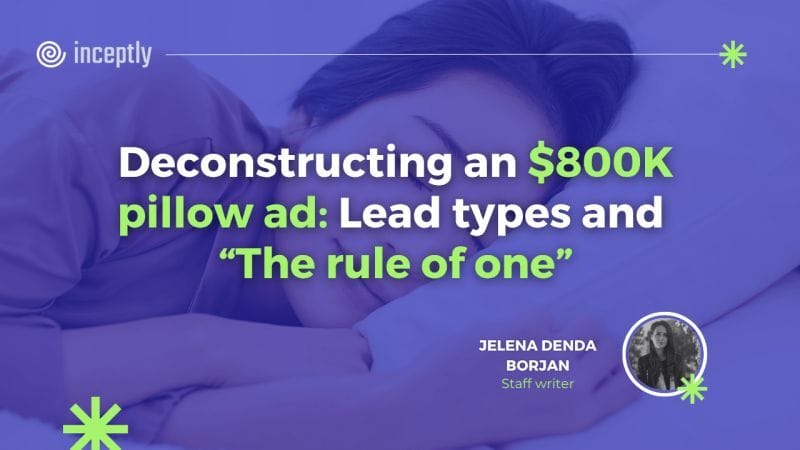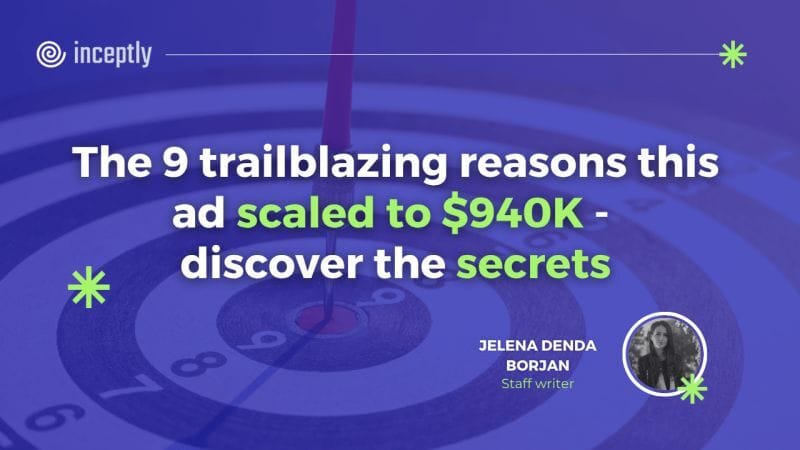- Inceptly
- Posts
- The hidden balance: How CPM and CTR shape real advertising costs 💵
The hidden balance: How CPM and CTR shape real advertising costs 💵
Previously, we explored how CPM (Cost per Mille) acts as the first lever in your ad economics - the price of entry to attention. Now we’ll go a step deeper and unpack how CPM and CTR together define your real cost CPC, or cost per click. Let’s start from the base equation: CPC = CPM / (10 × CTR(%)) |  Author: |
At first glance, this seems obvious - higher CTR and lower CPM mean cheaper clicks. But beneath that simplicity lies a deeper structure. To see it clearly, let’s hold CTR constant for a moment and watch what happens when CPM moves.
If CTR is 2%, then 10 × CTR(%) = 20. That means for every $20 increase in CPM, CPC increases by exactly $1. Mathematically, this relationship is linear, which we can write as y = b × x, where CPC=y, CPM=x, and b = 1/(10 × CTR(%)). Expressed in small changes, Δy = bΔx. These symbols might look abstract, but the meaning is simple: the higher your CTR, the less each CPM fluctuation matters in absolute numbers.
Want help scaling YouTube ads & Top of Funnel Google Traffic?
Join us for a free brainstorming session here:
Let’s make this more tangible. Suppose CPM increases by $5. If CTR = 2%, CPC goes up by $0.25. If CTR = 1%, CPC goes up by $0.50. If CTR = 0.5%, CPC jumps by a full dollar. The weaker the engagement, the more fragile the cost structure. This is why a low CTR campaign often feels unstable - because every movement in CPM gets magnified at the cost per click level.
The figure below shows these linear relationships. Each line represents a constant CTR. The steeper the line, the more exposed the system is to CPM turbulence.

Now, let’s see what if the constant is CPM, and we need to describe the relationship between CPC and CTR. Again, the equation is:
CPC = CPM / (10 × CTR(%))
But now we assume that CPM isn’t a changeable parameter. Then, this equation has the form of an inverse proportional function:
y=k/x
Where k=CPM/10, y=CPC, x=CTR (%) . Here, we cannot expect to see equal changes in CPC when CTR changes for the same values. Let us draw this function for the k=1 value (when CPM=$10).
We see that CPC decreases while CTR increases. The first derivative of the function is -k/x2, the rate of CPC changing is rapid at first (for smaller x), and after some CTR value, it becomes pretty flat, so we can conclude that there is a CTR value when further increasing doesn’t produce a significant decrease in CPC.

But, we can make the view angle wider, and see if there is a space for improving CPC significantly, by the CTR increasing. If we look carefully at the chart, we’ll see that “the flattening” begins approximately at CTR=2%. On the other hand, improving CTR from, for example, 0.5% to 1% would decrease CPC from $2 to $1. Also, this curve changes for the different values of CPM. Let’s draw what happens when CPM is not $10, and we will use values of $20, $30, $50, $80, $100, $150.

Clearly, the curves become flattened earlier when CPM is relatively smaller. If you change, for example, CTR from 1% to 1.5% when CPM=$10, CPC will change from $1 to $0.67, but if CPM=$80, then CPC changes from $8 to $5.33 in the same CTR range!
The math above shows not only the proportional relationship between CPC and CPM/CTR, but also the absolute changes in CPC that occur as one of the other two metrics shifts - explaining when those changes are larger or smaller, and why. In real-world work, an experienced media buyer already develops an instinct for typical CPM ranges under certain campaign setups and learns to read the CTR/CPC combination that follows. This makes it easier to estimate how much CPC can realistically change under given conditions.
Of course, in practice, no metric ever stays perfectly constant. CPC variations always result from the joint movement of CPM and CTR. The winning formula is clear: lower CPM and higher CTR deliver the most clicks for the same spend. Yet “more clicks for the same money” isn’t always a victory. The quality of those clicks - ultimately measured by conversion rate - determines whether the achieved CPA truly meets the goal.
A campaign with the lowest CPC is often not the one delivering the best results. That’s why understanding the relationships between the metrics connecting impression and conversion helps you decide what to pause early and what deserves time and effort to fix. One thing is certain: optimization should never rely on a single metric.
Want to brainstorm with us on new ways to scale your business with YouTube Ads (and other performance video platforms)?
Join us for a free YouTube ad brainstorming session here:
 | Bobo Slijepcevic, Director of Media Buying & Analytics From black holes to ad clicks, Bobo took a cosmic leap from astrophysics to analytics. After years of teaching physics and explaining why Schrödinger’s cat is both alive and dead (but definitely not a good pet), he joined Inceptly in 2022. Now, he spends his days decoding YouTube metrics and buying media like a physicist shops for particles — with precision, curiosity, and the occasional caffeine boost. |
Get in touch with us by responding to this email or tagging us on LinkedIn or Instagram, and sharing your thoughts. Your feedback helps us keep our newsletter relevant and interesting.
🎯 Inceptly’s top picks:
Essential reading you can't afford to skip
$800,000 in ad spend on a single video - for a pillow. Sounds insane, until you see the structure. This breakdown uncovers how one simple ad followed two timeless rules: clarity of lead and singularity of message, to dominate YouTube and scale far beyond what most brands could ever imagine.
Inside, you’ll see how a clean, creative setup, one strong emotional thread, and flawless sequencing of benefits turned a simple comfort product into a success story. It’s a must-read for anyone running performance-driven video ads.
They cracked the code on scale - and you won’t believe how.
In this breakdown, we pull back the curtain on the 9 trailblazing reasons why one ad didn’t just perform - it exploded. From clever angles and tight hooks to layered offers and psychological taps, every piece was calculated for scale.
If you’re chasing growth, this is the blueprint you need.


